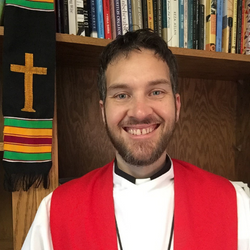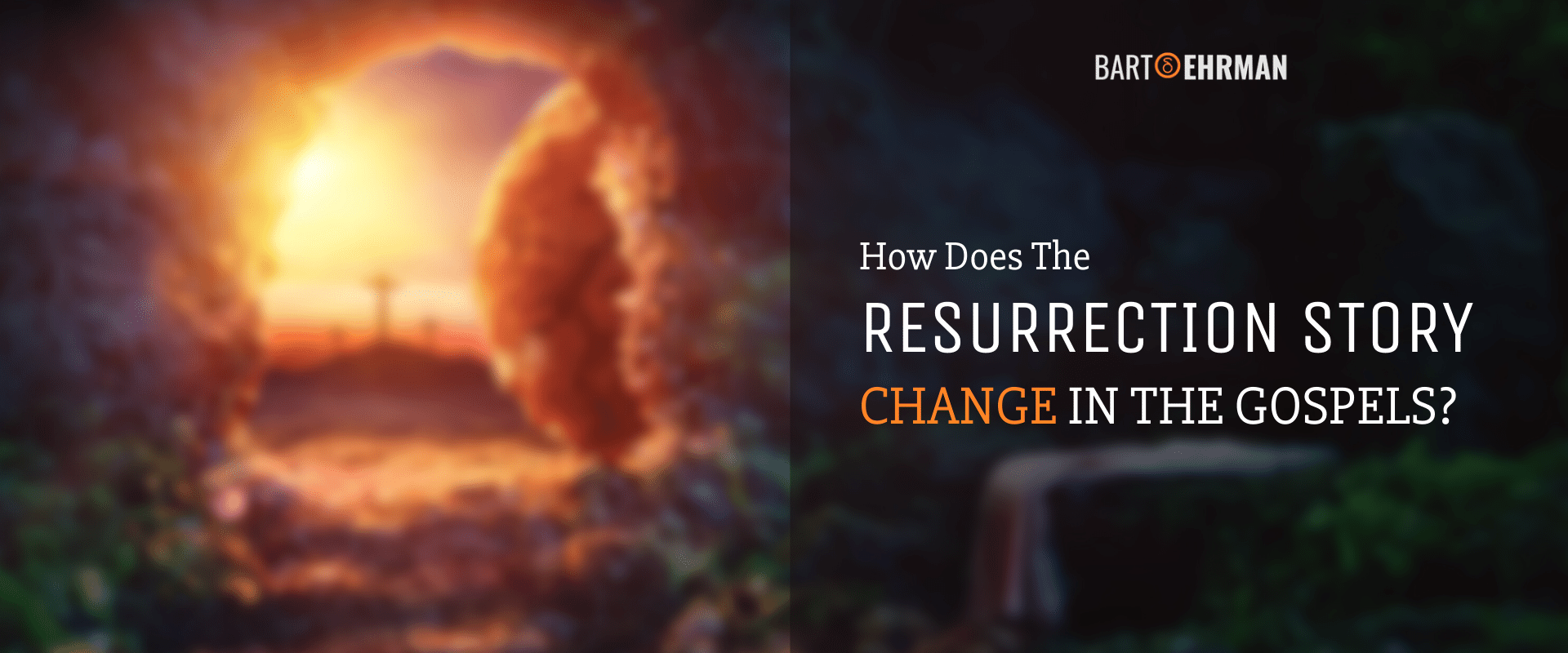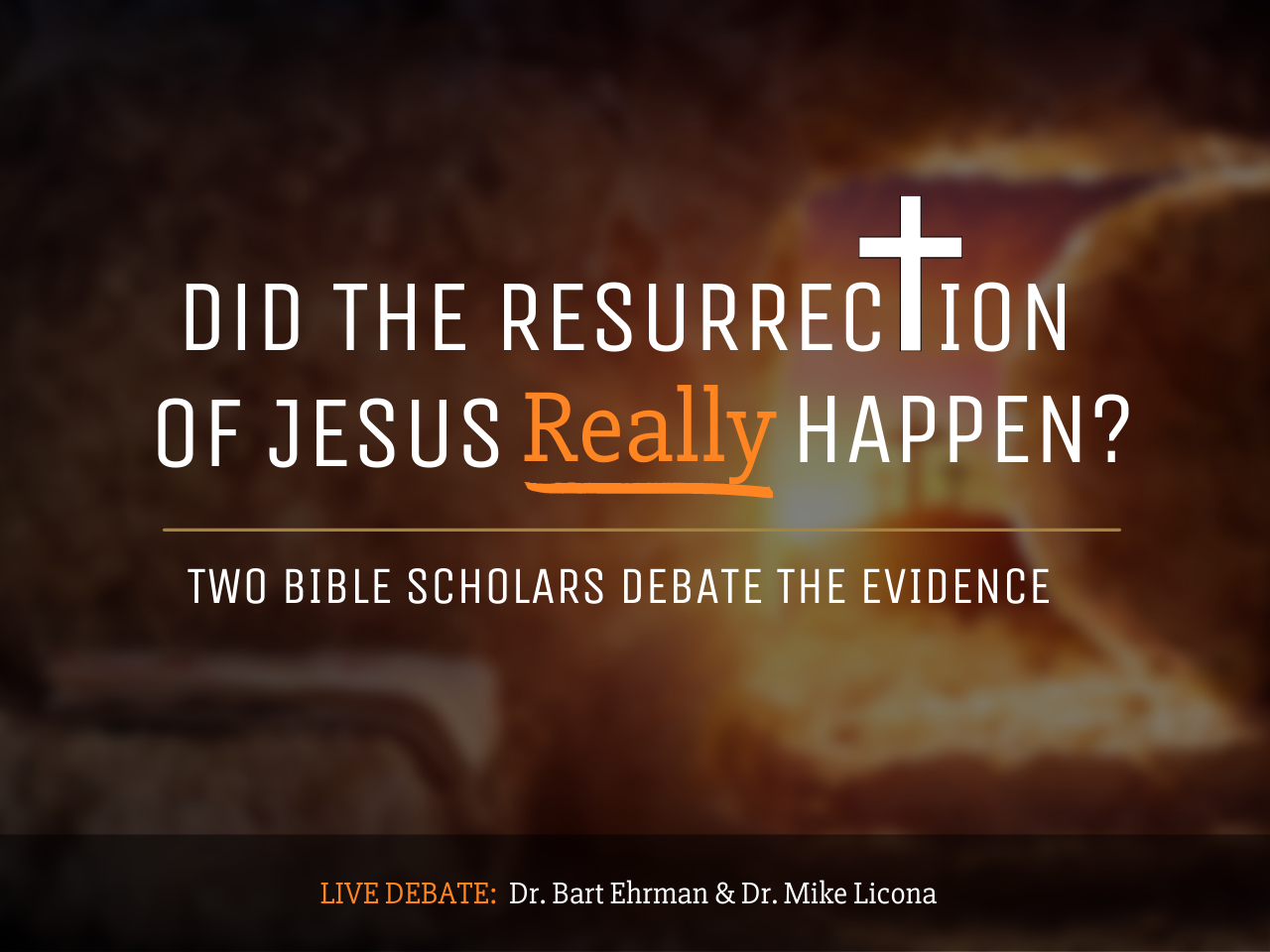how does the Resurrection Story Change in the Gospels?

Written by Keith Long, MDiv
Author | Pastor | BE Contributor
Verified! See our editorial guidelines
Verified! See our guidelines
Date written: March 16th, 2022
Disclaimer: The views and opinions expressed in this article belong to the author and do not necessarily match my own. - Dr. Bart D. Ehrman
The story of Jesus’ resurrection is over two hundred decades old. Millions of people have heard, been inspired, or intrigued by this Biblical tale—or rather, tales. Christians have long since celebrated Jesus overcoming the finality of death as the greatest story ever told.
But did you know that the story of Jesus’ resurrection is told in multiple ways? In this article we will explore the story of Jesus’ resurrection as told by the four Gospel writers of Matthew, Mark, Luke, and John, and how their stories are similar, different, and why.

How many gospels mention the resurrection?
You don’t have to be equipped with a theological degree to know the answers about Jesus’ resurrection, but let’s say you find yourself in a Christian sanctuary on Easter morning and the preacher calls on you to give the biblical details of Jesus’ resurrection. Would you know where to look?
Fear not substitute preacher! Jesus’ resurrection appears in all four of the Gospels of Matthew, Mark, Luke, and John—only it is not the same exact story.
On what essential points about the resurrection do all the gospels agree?
Anyone giving critical thought and attention to the gospel accounts of the resurrection side-by-side should be able to spot the similarities between the accounts.
The core of the resurrection story is generally the same. If you combined all the core details together, the Easter story would go something like this:
On the first day of the week at sunrise, Mary Magdalene, possibly accompanied by other followers of Jesus, arrived at his tomb. Only Jesus was not there! One or possibly two angelic beings greeted them announcing Jesus had arisen from the dead.
Filled with fear and joy, Mary was instructed to tell the remaining disciples of the good news of Jesus’ resurrection. In the days that followed, Jesus himself made appearances to his disciples. The gospels record that the disciples were able to speak with the resurrected Jesus, eat with him, and touch him before he ultimately ascended to heaven, leaving his disciples to spread the good news.
Universal agreement about Christian foundational beliefs are few and far between, but both fundamental and progressive scholars alike have little doubt that Matthew and Luke borrowed from the Gospel of Mark which accounts for many of the similarities in the first three gospels, although Matthew and Luke’s resurrection accounts are much longer and add new details to their narratives.
While the Gospel of John contains a lot of stories not found in the Synoptics, its resurrection narrative sticks more or less to the core narrative - that the tomb was found empty, that he appeared to his disciples, and so on. There are some notable differences in the gospel accounts, however.
On what points about the resurrection do the gospels Disagree?
What varies in both subtle and not-so-subtle ways are the secondary details. Here is a summary of some of the resurrection differences and contradictions to be mindful of in a side-by-side comparison of each Gospel’s account of Jesus’ resurrection and its immediate aftermath:
First to the tomb: Mary Magdalene and “the other Mary”
Secondary Details Unique to Matthew’s Gospel:
- A violent earthquake
- An *angel of the Lord rolled back the stone
- Frightened guards who became like dead men
- Jesus intercepts the women on their way to tell the other disciples
- The women clasp Jesus’ feet and worship him
- The chief priests plot a conspiracy about the disciples stealing Jesus’s body
- The commissioning of the disciples on a mountain of Jesus’ choice occurs
First to the tomb: Mary Magdalene, Mary, the mother of James, Salome
Secondary Details Unique to Mark’s Gospel:
- The women fled from the tomb and said nothing to anyone - a curiously abrupt ending to Mark’s gospel
First to the tomb: Mary Magdalene, Mary mother of James, Joanna, “other women,” Peter
Secondary Details Unique to Luke’s Gospel:
- Two angels greet the women in the tomb
- The risen Jesus appears to two followers on the road to Emmaus and disappears in the breaking of the bread with them
- Jesus appears to his disciples and invites them to “touch and see” that he is not a ghost, eating a piece of broiled fish with them
First to the tomb: Mary Magdalene, Simon Peter, the disciple Jesus loved
Secondary Details Unique to John’s Gospel:
- There’s an accusation of grave robbery
- Two disciples race to the tomb
- Jesus’ linens are discussed at length
- Mary weeps and sees two angels
- Jesus appears to Mary and she thinks he is the gardener
- Jesus refuses to be touched or held onto
- Jesus appears to his disciples while they hid behind locked doors, breathing on them the Holy Spirit
- Jesus invites Thomas to put his finger in the mark of the nails and his pierced side
*The number of angels varies between the resurrection stories. Matthew and Mark name one angel at the scene, Luke and John name two angels.
Why do the Gospels differ on the resurrection?
As for the additions and subtractions to Mark’s storytelling, why is there an expanding and contracting on the core details? Perhaps Mark’s cliffhanger in chapter sixteen made for great theater for him but left the other writers wanting a few more stones unturned.
The reasons for the differences, however, likely go much deeper than creative license. By the time the other Gospels were being written, Christian doctrine formation was in its infancy as questions about Jesus’ resurrection ran rampant. The early church wondered about what seeing Jesus alive meant about his life, his death, and how his followers ought to think and act on Jesus’ teaching. The Gospel writers perpetuate the answers to these questions about Jesus in their resurrection accounts of him, leading readers to wonder not only about the nature of the resurrection, but the nature of Jesus himself—a question Bart expertly answers in his book How Jesus Became God.
Whatever the case, Matthew and Luke communicate all sorts of secondary details that are just not there in Mark’s storytelling. And then there’s the resurrection story according to John’s gospel—a narrative loaded with core and secondary details that none of the other Gospel writers mention. Was Mark trying to be coy or did the other writers get access to some “Q” source information or did they hear other stories that Mark didn’t? Were not all Gospel writers privy to the same divine inspiration and oral tradition? If Mark got the story right, there would be no need to make any modifications—but this is most certainly not the case.
The differences abound, leading readers down one rabbit hole after another in search of the truth about Jesus. Stick with the quest long enough and the details about what happened become secondary to the core question of who wrote these ancient narratives to begin with. Who were these Gospel writers, anyway?
Were the Gospel writers eyewitnesses to Jesus’ resurrection?
The root cause for the differences is likely due to the fact that none of the writers were eyewitnesses to the resurrection. They were Greek authors writing about stories they heard passed onto them in the longest game of “telephone” ever played. And whoever told these stories about Jesus did so after the resurrection sightings—whether spiritual visions or physical encounters—and were not written down until at least four decades had passed since Jesus was crucified. That is a lot of time between actual events taking place and the recording of them!
Even in this day and age of technological superiority and journalistic integrity, I would suspect a good deal of information would get missed or misconstrued if someone set out to write a detailed account of something that happened forty to seventy years prior, especially without having been an eyewitness personally. The time between Mark’s gospel and the others also increases the likelihood that the authors of the more recent Gospels utilized different sources to create their accounts of Jesus. I can’t even gather the exact story details gleaned from my children from a one-hour time span! The odds that each author would therefore hear and conclude the exact same things over decades of storytelling about Jesus are slim to none.
When you combine all these probabilities with the theory that each author wrote to address the needs of different audiences as scholars like Bart Ehrman advise, then it is easier to understand why so many secondary details conflict between the resurrection narratives. The important thing is to recognize they’re different and to accept the variety with curiosity instead of fear or denial as Dr. Craig Keener describes.
It is my opinion that the resurrection details differ because the storytellers intended to tell their own versions of what happened. Be it because Matthew wanted to persuade a Jewish audience of the divinity of Jesus as Bart posits here or how Greek authors like Mark and Luke sought to mythically elevate Jesus from humble teacher to epic hero as this book demonstrates, or that John’s gospel account of Jesus’ resurrection was above-all meant to be interpreted as spiritual and a metaphysical event as this book teaches, Jesus’ resurrection remains eternally captivating regardless of the rationale for its significance.Conclusion
From investigative journalists like Lee Strobel making a compelling case for the benefits of these differences to this skeptical blogger’s equally compelling argument against them, the truth of the resurrection of Jesus continues to evolve. For the serious seeker, no one is better than Bart to guide you into the deepest depths of resurrection research. His books Jesus, Interrupted, The Gospels Before Jesus, and How Jesus Became God are equipped to inspire, stretch, and inform the most inquisitive minds on the subject, as well as many of his other books and articles.

